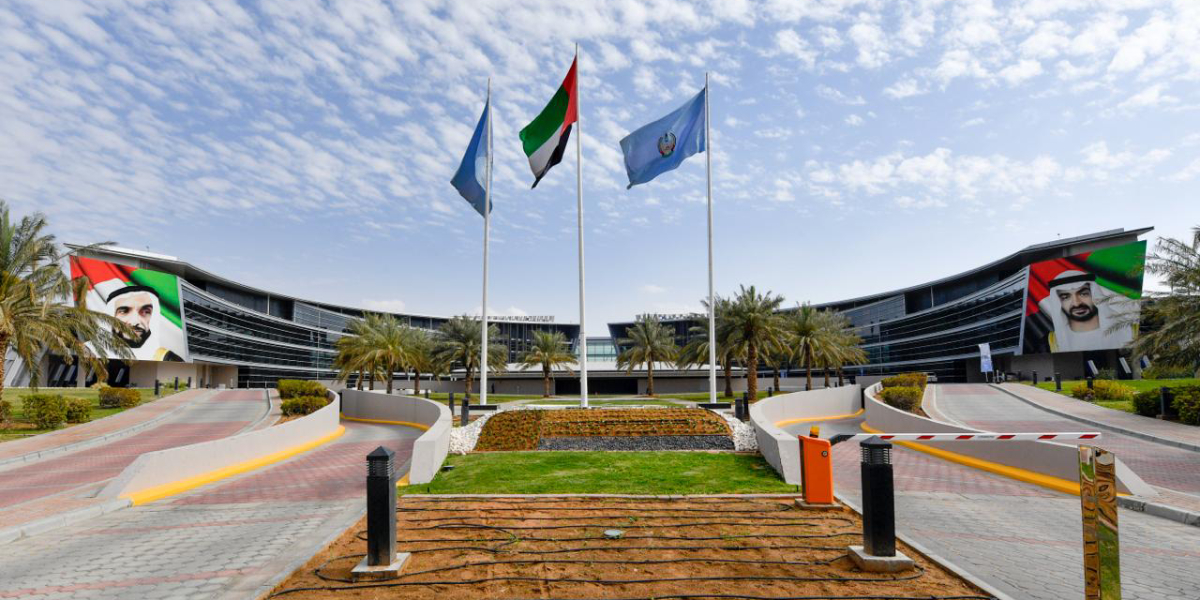Arab Satellite 813 Showcases the UAE’s Growing In-House Capability in Satellite Assembly, Testing and Operation
Thu, 13 November 2025

The National Space Science and Technology Center (NSSTC) at the United Arab Emirates
University announced the successful completion of all environmental and technical
test phases for the Arab Satellite 813 at its Assembly, Integration, and Testing (AIT)
facility in Al Ain. Conducted entirely using national infrastructure and Emirati expertise,
this achievement marks a major milestone in developing the UAE’s in-house capacity
for satellite assembly and testing. It establishes the Center as a fully capable facility
able to execute comprehensive test campaigns in accordance with the highest international
standards strengthening the nation’s long-term sustainability in the space sector.
It was also announced that the Arab Satellite 813 has successfully passed both the Launch Readiness Review and the Operational Readiness Review, reflecting its full readiness for launch and its ability to operate reliably and continuously in orbit.
Details of the Environmental Tests
The environmental testing campaign comprised a series of precise and advanced testing facilities designed to simulate the harsh conditions the satellite will encounter during launch and orbital operations. These tests were carried out using high-precision equipment in a contamination-free environment at the NSSTC’s AIT facility, following the highest international standards. The tests included:
- Thermal Vacuum Test: This test simulates the temperature and pressure conditions of space to ensure the efficiency of thermal systems and the stability of satellite components. Conducted inside a thermal vacuum chamber, the satellite was exposed to extreme temperature cycles ) -173 to 127 Celsius( to replicate the external conditions of space. This process verifies the thermal control system’s performance and the satellite’s ability to maintain thermal stability while operating in orbit.
- Vibration Test: This test replicates the mechanical loads the satellite will experience during launch, ensuring the structural integrity and reliability of internal systems. Using 3D axis (X,Y,Z) the test simulated the accelerations and vibrations of launch. The response of structural components and electronic units was closely monitored to confirm that no mechanical issues could affect the satellite’s structure or payload.
- Mass Properties Test: This test measures the satellite’s mass and center of gravity with high precision within specified tolerances. These measurements are critical for ensuring accurate attitude determination and control during orbital operations.
These tests were executed by a team of specialized Emirati engineers to ensure the satellite meets performance and safety requirements for its mission environment, adhering to the highest global technical standards.
Details of the Flight Readiness Review (FRR) and Operations Readiness Review (ORR)
The Flight Readiness Review (FRR) verified that the satellite, launch vehicle, and ground systems are fully prepared, with all required tests and safety checks successfully completed. Meanwhile, the Operations Readiness Review (ORR) confirmed the readiness of the NSSTC ground station and mission operations teams, ensuring that all communication systems and operational procedures are in place. It also validated the seamless transition of the mission from launch to in-orbit operations.
These milestones follow the comprehensive Assembly, Integration, and Testing (AIT) campaign, conducted entirely at the National Space Science and Technology Center (NSSTC) in Al Ain by certified UAE engineers and technicians, under the supervision of Airbus as the AIT knowledge-transfer partner. This achievement marks the first time a full spacecraft qualification campaign of this scale has been successfully executed at NSSTC.
The successful completion of the Arab Satellite 813’s environmental tests marks a significant milestone for the NSSTC’s journey toward developing an advanced space infrastructure within the UAE. We are proud that our facilities and technical capabilities have become a launchpad for pioneering Arab space missions, and that we play a pivotal role in positioning the UAE as a regional hub for satellite integration and testing.
The goal of this project was not limited to being a technical achievement; rather,
it was a fundamental step toward building a sustainable national base of expertise
and capabilities. Throughout this journey, we implemented specialized and comprehensive
training programs in collaboration with pioneering partners in the space sector, to
qualify our national team to carry out complex tasks in design, assembly, and testing.
This investment is part of a long-term vision to transfer, circulate, and sustain
knowledge, and to transform it into a specialized industry capable of competing and
continuously growing.
The environmental and functional test campaign for the Arab Satellite 813 was carried out in accordance with the highest international standards adopted in the space sector. This campaign included thermal vacuum, vibration, mass properties, and solar panel deployment tests. In addition to the environmental tests, comprehensive functional tests for the satellite and its payload were conducted entirely within the Center’s Assembly, Integration, and Testing (AIT) facility. These tests are essential to ensure the satellite’s readiness and its ability to withstand harsh launch conditions and operate reliably in orbit.
What makes this campaign particularly remarkable is that the mechanical ground support equipment used in these tests was fully designed by a team of Emirati engineers and manufactured locally — a step that strengthens the development of an integrated national industrial ecosystem to serve and sustain the space sector.
The Flight Readiness Review and Operational Readiness Review were not merely checklists or routine procedures; rather, they marked a pivotal milestone in showcasing our national capabilities in developing and operating satellites, while also fostering a supportive environment that contributes to enhancing the skills of Arab engineers and experts in space science, technology, and innovation. Following the moment of launch, the team in Al Ain will be fully responsible for commanding and guiding the satellite step by step
As one of the flagship projects under the Arab Space Cooperation Group (ASCG) initiatives, the Arab 813 satellite has contributed to fostering knowledge exchange and enhancing the participation of Arab engineers and students in the space sector. This achievement reflects the UAE’s leading role in promoting regional space cooperation and underscores its long-term strategic vision for building sustainable national capabilities in space science and technology.
About Arab Satellite 813
The Arab Satellite 813 hosts a suite of advanced payloads that enable the capture
of high-resolution hyperspectral imagery, supporting environmental monitoring and
enhancing data driven decision making across multiple fields, including:
- Natural resource management
- Monitoring desertification and changes in vegetation cover
- Analyzing air and water quality
- Assessing the impacts of climate change
- Supporting response to environmental disasters
The 813 Satellite is the first collaborative project among Arab countries, spearheaded by the UAE under the directive of His Highness Sheikh Mohammed bin Rashid Al Maktoum, Vice President and Prime Minister of the UAE and Ruler of Dubai. His Highness announced the project as a gift to the Arab Space Cooperation Group, coinciding with the signing of the Arab Space Cooperation Charter.
This space mission is being developed by the NSSTC at UAEU in cooperation with member states of the Arab Space Cooperation Group. Scientifically, the satellite will advance research and analysis efforts by enabling the creation of environmental maps, monitoring and archiving natural phenomena and resources, studying land cover dynamics, and tracking the condition of agricultural crops. It will also provide critical data on the type and distribution of inland water bodies, contribute to assessing land erosion and soil pollution within the context of climate change, and monitor mining sites and analyze their environmental impacts. The 813 Satellite embodies a model for Arab space cooperation and represents a strategic step towards building a sustainable Arab space ecosystem that relies on local talent and advanced scientific research.
Do you find this content helpful?
عفوا
لايوجد محتوى عربي لهذه الصفحة
عفوا
يوجد مشكلة في الصفحة التي تحاول الوصول إليها

